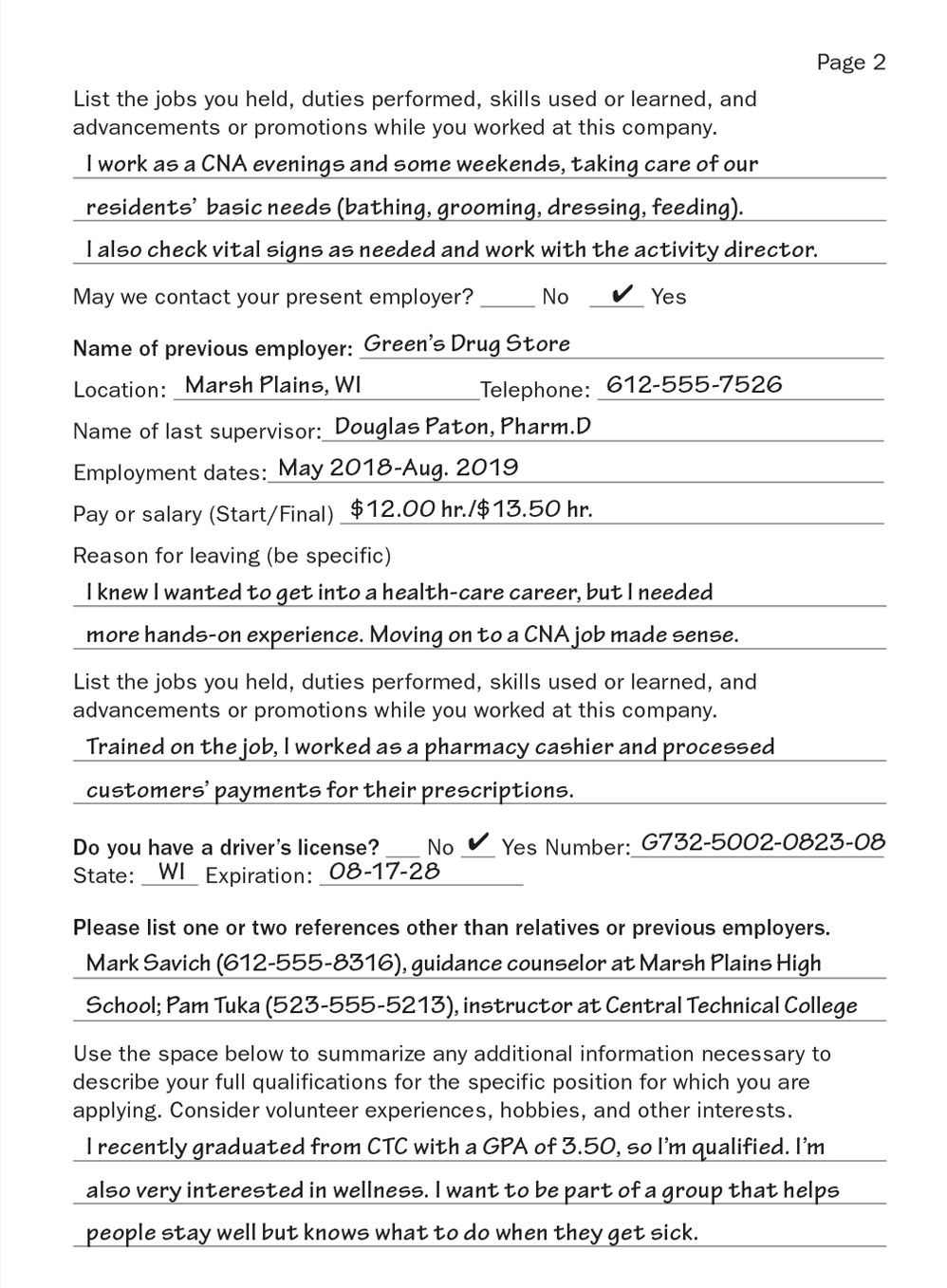13
Completing Forms
Forms may not be particularly glamorous, but they do an important job: collecting standard information needed about people, jobs, orders, requests, and many other aspects of business. For many years, paper forms dominated business, and now, with online transactions, forms seem to be taking over the world.
This chapter focuses on common workplace forms. The guidelines at the beginning of the chapter give tips for completing forms accurately. Many models afterward show typical forms and how they should be completed. For each paper form shown in this chapter, an online version would also exist, to be filled out the same way.
In this chapter
Guidelines Completing Forms
When filling out a form, your goal is to provide complete, correct information.
-
Plan: (Ideas and Organization)
-
Think about who needs this information and why.
-
Don’t be intimidated: Keep your mind on what the form will accomplish for you.
Review the form.
-
Carefully read the instructions.
-
Gather the information you need.
-
-
Draft: (Ideas, Organization, and Voice)
-
Follow the directions.
-
Complete each required field.
-
-
Revise: (Ideas, Organization, Voice, Words, and Sentences)
-
Are all required fields completed?
-
Is the correct information entered in every field?
-
For handwritten forms, did you double-check the readability?
-
-
Edit: (Conventions and Design)
-
Have you checked spelling, especially of names?
-
Have you checked all numbers to make sure they were copied correctly?
-
“I’ve worked in several large companies. . . . You couldn’t get anything done without filling out a form. There was even a form that you had to fill out when there wasn’t any regular form available.”
—Mark Schneider
Filling out Phone Memos

Filling out Job-Completion Forms

Completing Accident-Report Forms

Completing Order Forms

Filling out Service Invoices

Completing Fax Cover Sheets

Completing Job Applications


Completing Electronic Forms
